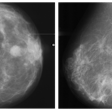Medical groups are calling the final continuing resolution (CR) from Congress a mixed bag when it comes to addressing healthcare concerns.
Congress on the night of December 20 passed a stopgap measure to keep the government funded through March 14. The passing of the measure avoids a funding lapse for federal services, including those in healthcare. However, it does not include addressing the pay cut finalized by the Centers for Medicare & Medicaid Services (CMS).
“Lawmakers are playing a dangerous game that will ultimately hurt patient access to physicians who can no longer deal with the chaos caused by congressional inaction to fix a reimbursement system that continues to destabilize the Medicare program,” said Anders Gilberg, senior vice president of government affairs for the Medical Group Management Association (MGMA).
Among the key components in the CR include extending current telehealth flexibilities, quality measure funding, and the work geographic index floor through March 2025. The CR also avoids a potential across-the-board Medicare payment reduction resulting from pay-as-you-go (PAYGO) budget requirements.
However, medical societies are decrying one part that was taken out of the finalized CR, which would have temporarily increased the Medicare physician fee schedule (MPFS) by 2.5% for 2025. This would have offset the 2.83% pay cut that the CMS finalized for the new year.
Radiology groups previously expressed concern about changes to reimbursement under the MPFS. While the CMS estimates a 0% change to reimbursement for radiology, nuclear medicine, and radiation oncology, an ACR analysis suggested that interventional radiology will have a 2% decrease in reimbursement.
The first draft of the CR included the fee schedule increase. While this draft had bipartisan support, it was shot down after President-elect Donald Trump and Elon Musk voiced opposition toward the CR’s passage. A second Trump-backed CR draft also failed to pass, leading to the third draft, which passed with overwhelming support in the U.S. House of Representatives and Senate. President Joe Biden on December 21 signed the final CR into effect.
Medical societies say that when medical practice inflation is factored in, the 2.8% cut would add to a total 6.4% payment cut to physicians.
The MGMA said the final CR “represents a huge congressional failure to the detriment of the nation's Medicare patients and their physicians.”
Gilberg said that physician practices head into the new year facing uncertainty and financial shortfalls that negatively impact the viability of their Medicare business. He added that this will also negatively impact physicians’ commercial contracts tied to Medicare rates and Medicaid reimbursement in states that use Medicare as a benchmark.
He added that while addressing the 2.83% cut to the conversion factor is “of utmost importance,” permanent reform to the Medicare payment system is needed “to sustainably support medical groups and their ability to provide timely access to Medicare patients.”
The American Telemedicine Association (ATA), meanwhile, said that while the CR is not the outcome the association had hoped for, it is "appreciative of this legislation as an important step to avoid disruptions in critical areas of telehealth access.”
“Looking ahead, we will immediately begin working to ensure Congress makes Medicare telehealth flexibilities and the Acute Hospital Care at Home Program permanent—or secures a much longer extension than 90 days," said Kyle Zebley, senior vice president of public policy for the ATA and executive director of ATA Action. "Simultaneously, we will advocate vigorously to reinstate the vital provisions that were left out of this package.”
The American College of Radiology (ACR) said it will continue to advocate for the inclusion of legislative language to address both the 2025 MPFS conversion factor reduction and permanent Medicare reform “as soon as possible.”



















